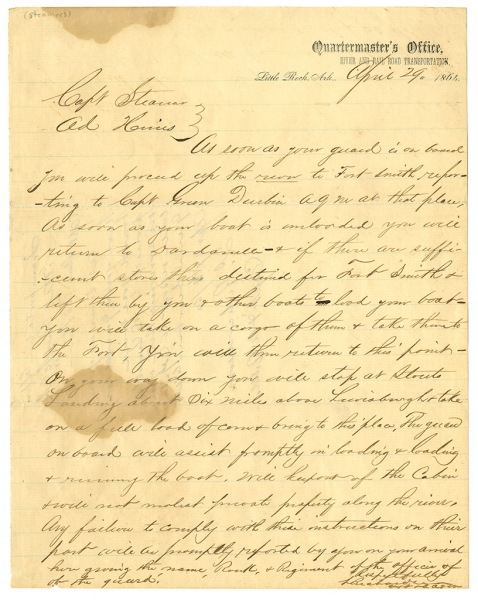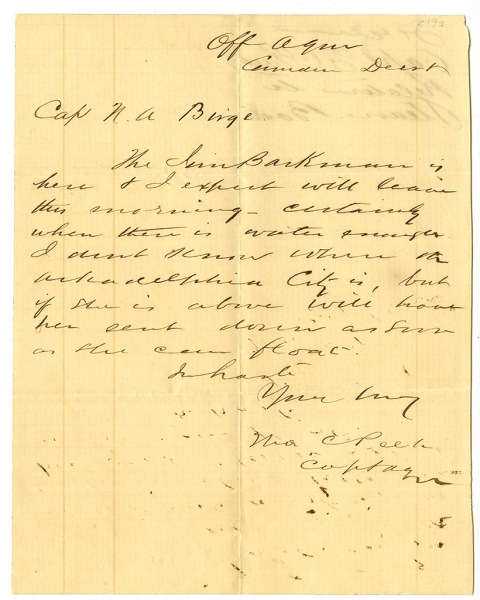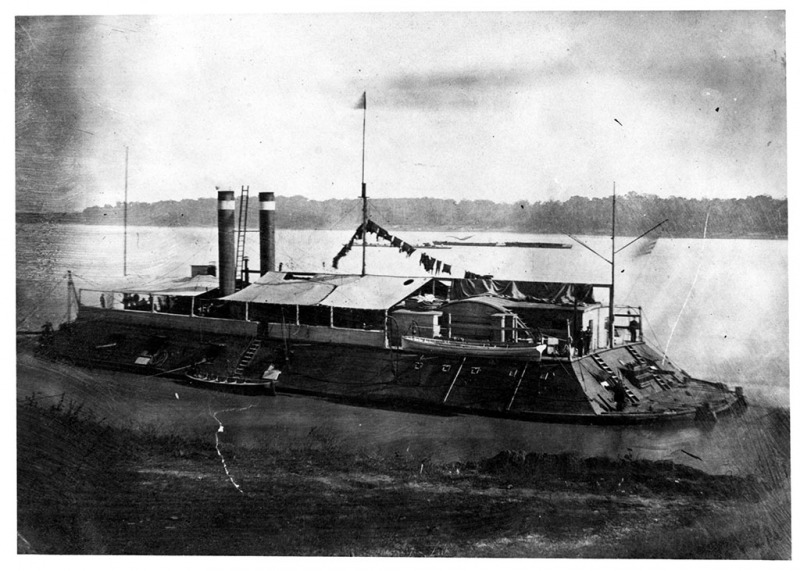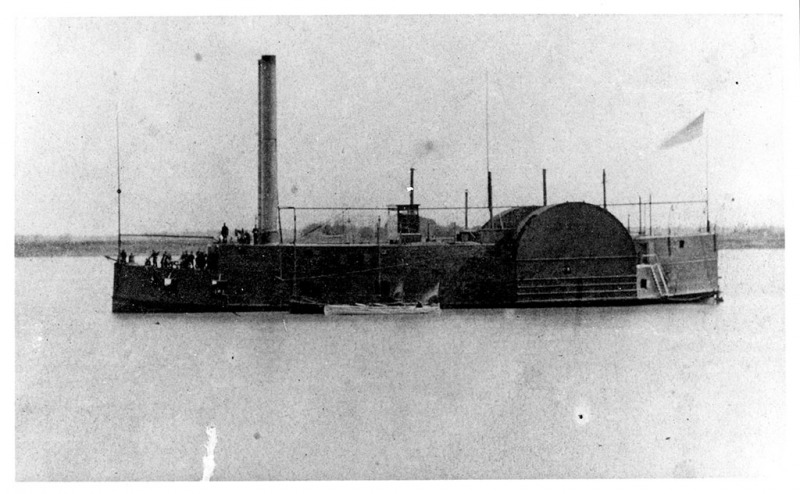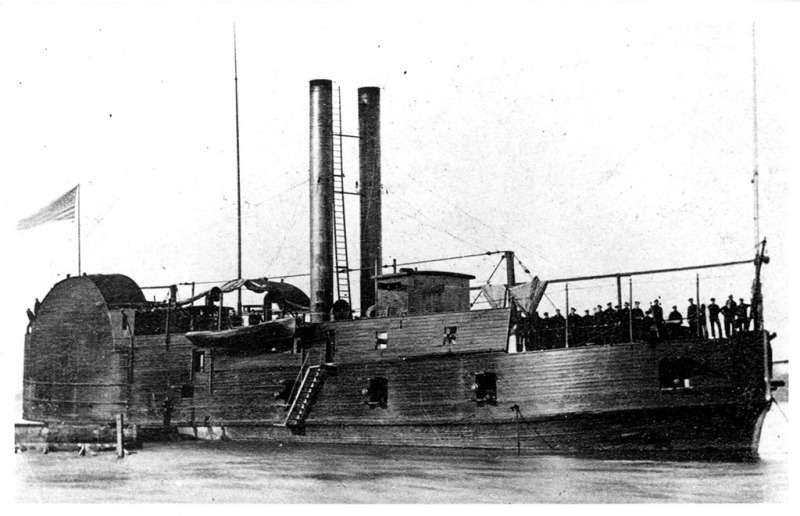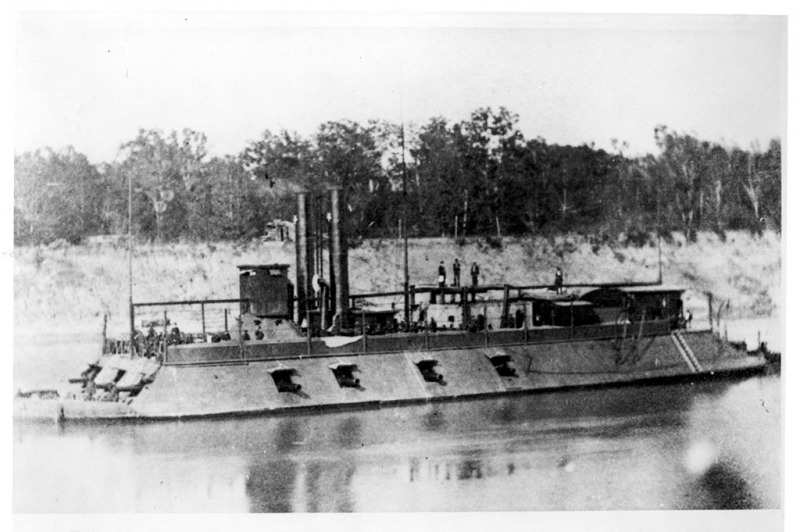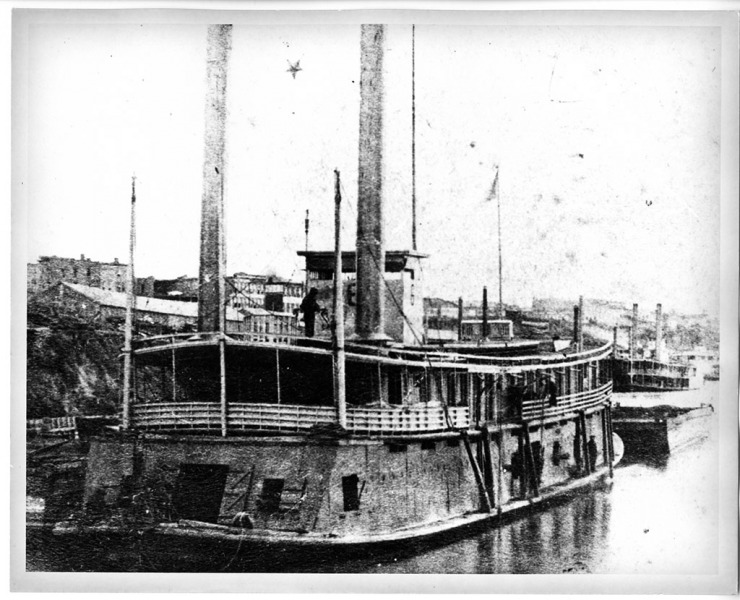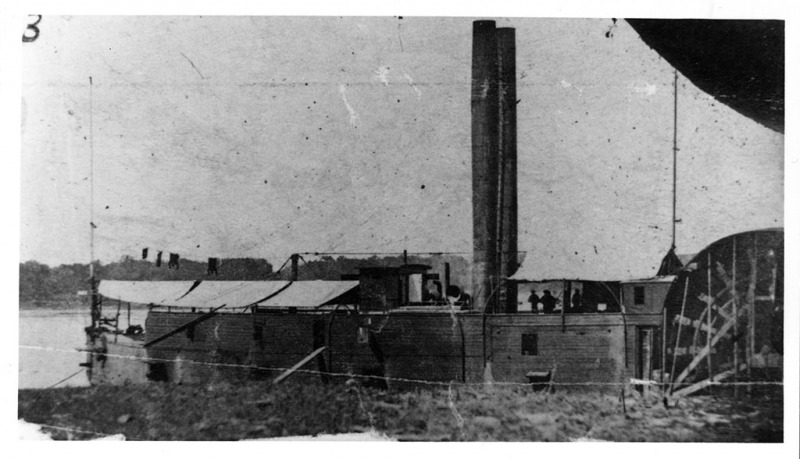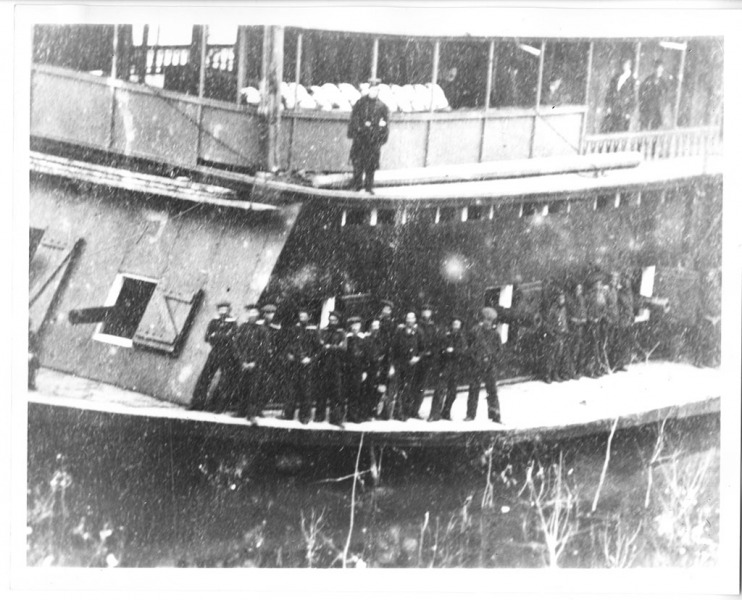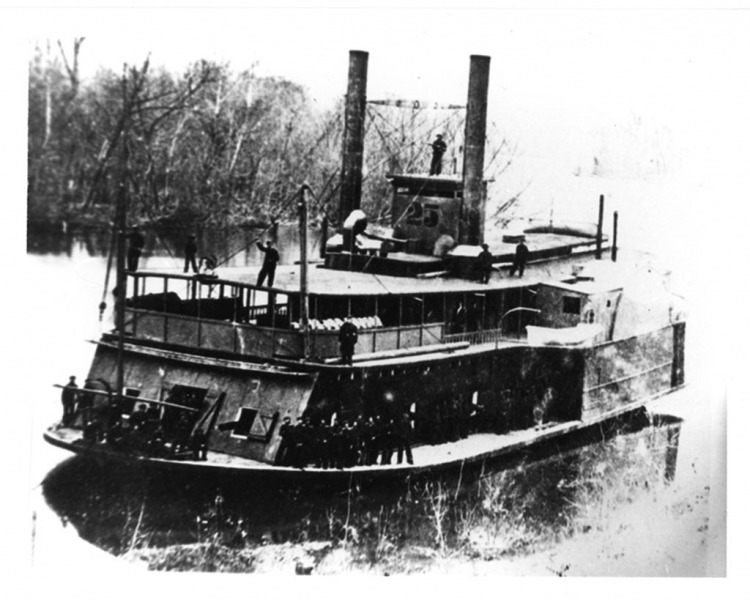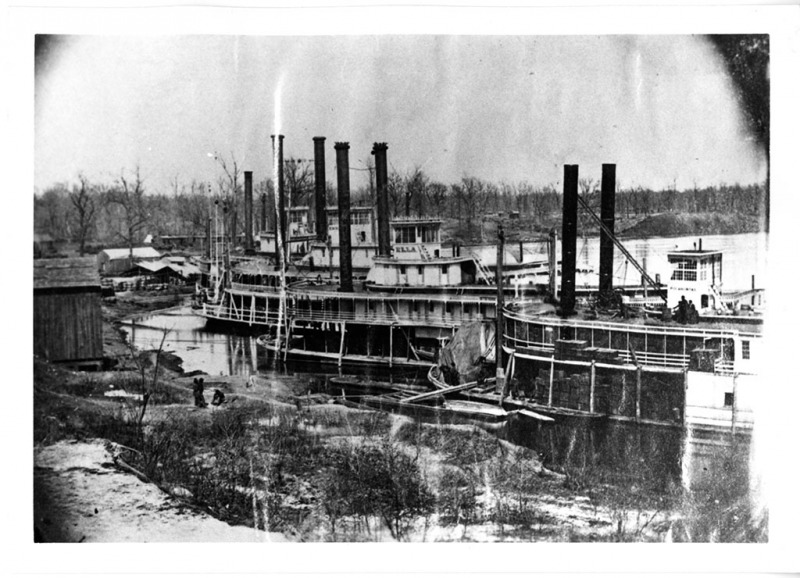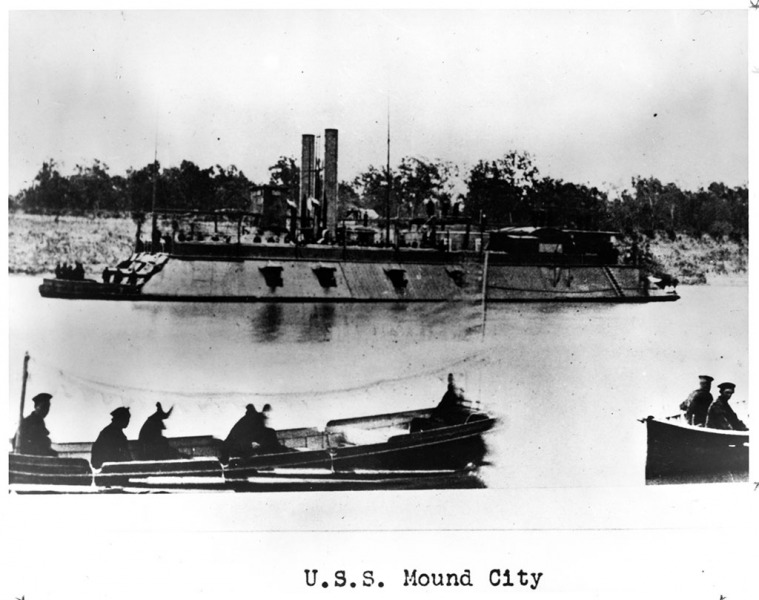The ability to rapidly move men and materials in a theatre of battle has always played a major role in military operations. In Arkansas, with only one railroad from Little Rock to DeVall's Bluff and few good roads, the state's rivers offered the only reliable avenue upon which either Confederate or Union forces could move. Thus, the side that controlled the rivers, had a singular advantage. Unfortunately for Confederate Arkansas, Northern forces early established that advantage.
A large number of steamboats, both gunboats and transports, saw service during the war. Two types of gunboats saw service. The Eads Rams, built specifically for the war, operated on the Arkansas and White rivers. They were the most heavily armed of the Navy's vessels, with four 42 pounder and six 32 pounder guns. Timber- and tin-clad steamers were more numerous. These were civilian boats drafted into military service and covered with oak planks and iron plates to protect the crews and engines. They were lightly armed, typically carrying one or two thirty-two or twenty-four pounder and several 8 inch guns. Often draughting as little as five feet, these steamers saw extensive service protecting supply transports and carrying out raids along the state's rivers.
The Union gunboats participated in three major engagements during the war. In the spring of 1862 a Union flotilla steamed up White River to provide supplies for an invasion force under General Stephen Curtis that had moved into northeastern Arkansas and aimed at taking Little Rock. The naval force included two Eads boats, the USS Mound City and the USS St. Louis, and two timber-clads, the USS Lexington and USS Conestoga, as well as numerous transports. On June 17 at St. Charles the Mound City engaged Confederate batteries. In the exchange of fire a shot hit the boat's boilers. The resulting explosion killed over half of its crew. While Federal infantry drove away the Confederates, falling water forced the expedition to move downriver and Curtis turned from Little Rock to Helena on the Mississippi River.
Gunboats also played important roles in battles at Arkansas Post and Helena. In the attack on Fort Hindman at Arkansas Post the Eads gunboats, USS Baron DeKalb, USS Louisville, and USS Cincinnati, devastated the fort with a bombardment prior to the infantry assault. Then, the tin-clads USS Rattler and USS Glide took advantage of their shallow draughts to move close to shore where they enfiladed the Confederate trenches and helped force a Confederate surrender on January 11. On July 4, 1863, when Confederate forces attacked the Union base at Helena, the guns of the timber-clad USS Tyler helped turn back the assault.
Escort service and raids occupied the majority of time for the gunboats. The USS Forest Rose, for example, patrolled the Mississippi River, and in a typical operation, on February 18, 1863, her men responded to fire from shore by landing, destroying a plantation home, store house, and slave quarters, and carrying away the slaves. The USS Cricket saw similar duty in August, 1863, when she participated in a raid up the White River that destroyed the Confederate telegraph, captured two steamboats, and burned a large warehouse filled with food at Des Arc. The Cricket then moved up the Little Red where it captured two more steamboats and destroyed a Confederate pontoon bridge. Such actions undercut the ability of Confederates to communicate with and supply their forces.
The majority of boats in Northern service were civilian boats hired to move supplies and men along the rivers. Following the Union capture of Little Rock in September, 1863, steamers provided a steady stream of supplies to maintain the garrison in the capital city. Since the Arkansas River was not navigable at all times, the boats went up White River to DeValls Bluff where they unloaded supplies to be shipped to Little Rock on the Memphis & Little Rock Railroad. Steamboats established a particularly vital supply line between Little Rock and Fort Smith.
The men who worked the transports faced possibly greater danger than the men on the gunboats as Confederates frequently fired upon these unprotected vessels. The passage from Little Rock to Fort Smith proved particularly dangerous. In one such incident, Confederate forces attempted to take the steamer Alamo above Dardanelle on November 29, 1864. A more devastating attack took place at Ivy's Ford on January 17, 1865, when Confederate troops destroyed three of four steamers carrying refugees from Fort Smith to Little Rock.
The rivers of Arkansas offered ample opportunity for naval warfare during the Civil War and the men who sailed the gunboats and transports played an important role in the fighting. The Union's ability to control the rivers inevitably helped assure their victory.
Carl H. Moneyhon, PhD., is a professor of history at the University of Arkansas at Little Rock. He is a specialist in the history of the American Civil War and the American South. His works on Arkansas include The Impact of the Civil War and Reconstruction on Arkansas (1994), with Bobby Roberts, Portraits of Conflict: A Photographic History of the Civil War in Arkansas (1987), plus numerous articles and book chapters.

